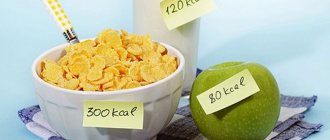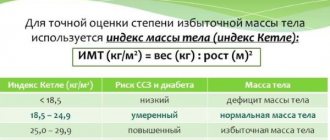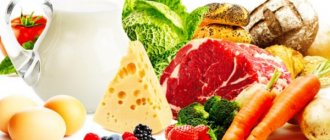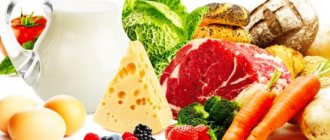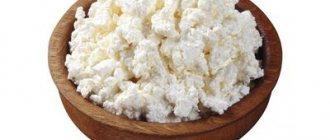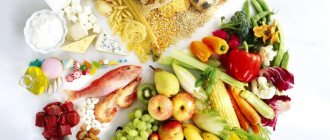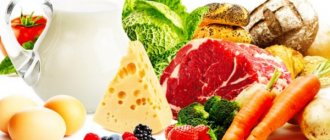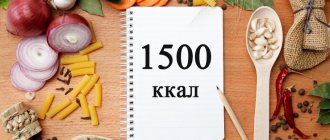“Championship” expert, wellness coach Andrey Semeshov
— about why diets are effective, but not always.
Photo: Valeria Barinova, “Championship”
“What diet should I try now to burn fat as quickly as possible?” - perhaps the most popular question. There are exactly two correct answer options: “None” or “Any”. And both are absolutely fair. Why does this happen?
Why physics is a super-precise science
Because physics! Law of energy conservation. It cannot come from nowhere and cannot go to nowhere. This is also true with regard to our issue of losing weight. We are dependent on energy from outside - these are calories from food. In the process of life, from lying on the couch in front of the TV to participating in an ultra-marathon, we spend this energy.
What follows is banal mathematics. If you ate 100 calories, but spent only 75 while lying on the couch, then the difference (15 calories) will be stored as a reserve in the form of fat deposits. If we do the opposite, we will force the body to compensate accordingly for the shortage by partially using up the “airbag”.

Photo: istockphoto.com
The irony is that we were designed in conditions of extremely irregular food supply, when every calorie was much more valuable than gold, so the chances of survival were higher for those individuals who learned how to store fat as much as possible at the moments when they managed to find food. So we are all actually descendants of “overweight” homo sapiens. And over millennia of evolution, the human body has masterfully learned to build up fatty tissue. And after we came up with the idea of combining combinations in one product that you cannot find in nature (lots of carbohydrates + lots of fats), the built-in fat accumulation mechanism began to go crazy with delight.
Ketch-McArdle Calorie Formula
This formula takes into account body fat content, but does not take into account gender, age, or height - it is understood that these indicators can be taken into account when determining fat content.
The formula looks much simpler than the previous ones: BM = 370 + 21.6 × x.
In this formula, “x” is body weight minus fat. Such measurements are often performed in clinical settings. Approximate body fat content can be measured using modern electronic scales or using one of the many online calculators.
The final value obtained from this formula must also be multiplied by the Harris-Benedict coefficient.
Example: Any person whose body weight minus fat is 40.6 kg and leads a sedentary lifestyle requires (370 + 21.6 × 40.6) × 1.2 = 1496 kcal per day.
Choose carefully: it’s easier to gain weight
That is, we love to accumulate fat and know how to do it, but “burning” it is difficult and only if there is force majeure. So, any diet is an imitation of such force majeure. We “cut” the supply of energy (calories), forcing the body to little by little “eat up” its reserves. Accordingly, the speed of this process depends primarily on the size of this delta. Other factors against this background are so insignificant that they can be completely neglected.
Therefore, the choice of a specific “diet” is unimportant. If only it created an energy deficit. True, it is worth considering that the more crazy the menu (for example, kefir with cucumbers), the faster the body will exhaust its vitamin and mineral reserves. In the worst case scenario, it is fatal. You should still choose a diet based on common sense and logic. Another important criterion is personal preference. Since losing weight is, in any case, a process that takes several weeks, you need to choose an option that will be most convenient for you personally to adhere to. For example, many girls, whose usual diet practically does not include meat dishes, will have a difficult time on a high-protein diet at first (until the enzymatic system is rebuilt). For others, the keto diet, which emphasizes eating fatty foods (yes, you can successfully lose weight on fats!), will be poorly tolerated.
So if you really need a diet, be careful with your choice. And keep in mind that “eat as much as you like” will not work. You can lose weight on any diet. Or gain weight. It all depends on the quantity, so...
Muffin – Jeora calorie formula
To date, this formula is considered the most accurate. To correct the result taking into account physical activity, the Harris-Benedict coefficients are used. The Muffin-Jeor formula looks like this:
- for women BM = 9.99 × weight (kg) + 6.25 × height (cm) – 4.92 × age – 161;
- for men BM = 9.99 × weight (kg) + 6.25 × height (cm) – 4.92 × age + 5.
Example: a 33-year-old woman weighing 55 kg, height 170 cm, leading a sedentary lifestyle, requires (9.99 × 55 + 6.25 × 170 – 4.92 × 33 – 161) × 1.2 = 1546 kcal per day.
The disadvantages of this formula include the fact that it does not take into account the ratio of muscle and fat in the body, since the metabolic rate depends on muscle mass, therefore, the need for energy must be determined based on this indicator.
We consider BJU: why?
The most, in my opinion, rational approach to losing weight comes down to a banal accounting of everything eaten - that is, calories. Why? Because this is the most flexible approach to creating your diet. You can “fit in” almost anything, anytime. For example, on one day distribute calories between cottage cheese, rice, chicken fillet and vegetables, and on another - between chocolate and ice cream. If it is equal in caloric content (and for you it will be fewer calories than you spend per day), you will lose weight with the same success on both days. Of course, the first option is not very tasty, but you will feel full almost all day, and the second option is not very tasty, but tasty. It's a matter of choice. But as for me, the main thing is that this very choice is always there.
Is physical activity important for calorie counting when losing weight?
Physical activity when losing weight by counting calories is important, but not required. That is, if you want to lose weight, start counting calories, and at the same time go to the gym or pool - of course, your weight will drop much faster.
But don’t forget about everyday activity - the number of steps taken per day, energy spent on cooking, calculating the daily life expectancy (yes, this also requires energy), etc. The main thing is that one activity does not become a detriment to another, no less important, everyday activity.
Want to know how to lose weight in 7 days? Read our article.
How to calculate all this?
“I can’t count - not only do you have to weigh everything, but you also have to know how much of what this carrot contains. And if it’s some kind of soup, then it’s not at all clear how to calculate everything!” Is this line of reasoning familiar? Don't panic! Yes, you really have to weigh your food. But 99% are exclusively at home, in a calm environment. Surely there are kitchen scales available, so adding one more movement - weighing - will not be difficult. In restaurants, canteens and other similar places, the weight of dishes is either indicated on the menu, or you can always check it with the waiter.
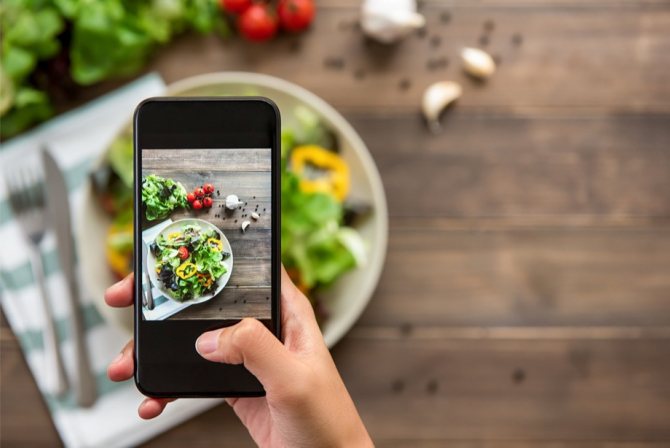
Photo: istockphoto.com
We haven't come up with a better idea yet: useful free apps
And then the magic of the 21st century begins. Take out your smartphone, open any calorie counter (the most popular today are FatSecret
and
MyFitnessPa
l, differ from each other approximately like a BMW and a Mercedes: both cope with the task with a bang) and by pressing a couple of buttons you find the desired dish, indicate the number of grams and that’s all. The program will immediately calculate calories, proteins, carbohydrates and fats. And it will even write down how much and what else you need (well, okay, you can) eat today.
For those who are familiar with their smartphone, mastering calorie counters will take about 10 minutes. If you have any difficulties, you can always enter the corresponding query into the YouTube search bar and watch a training video. Then the lion's share of questions will disappear by themselves. The rest will come with experience. Based on practice, the path to mastering MyFitnessPal from scratch to the “master” level takes 2-3 days, after which the terrible and terrible calorie counting takes five to ten minutes a day. As for me, it’s a reasonable price to pay for the opportunity to diversify a boring diet menu at any time with a donut or a pie with custard.
How much does it weigh in grams?
If you decide to try the method of calculating calories, then even in the process of mastering the program you will have a question - how much do you need to eat to lose weight? The first (and most correct) way is to find out your weight, then write down all your food for a week. Then add up all the calories and divide by seven (according to the number of days). This way you will determine your average daily calorie intake. If during this period your body weight has not changed, then this indicator can be taken as a starting point. And for starters, reduce your caloric intake by literally 10-15%. For those who are very pressed for time and need to start losing weight yesterday, there is a plan “B”. Using the Mifflin-Geor formula (Google to help), you determine your basic energy expenditure, how much your body spends to provide for itself in a state of complete rest. Then multiply the resulting value by the physical activity coefficient corresponding to you: 1.2-1.3 - inactive, mostly sedentary lifestyle; 1.4-1.6 - moderate activity, two or three workouts per week; 1.8+ - very active lifestyle, 3-4 or more workouts per week.

Photo: istockphoto.com
Calculating the calorie content of the finished dish
The calorie content of the finished dish is usually indicated in the cookbook, however, not always and not everyone has the opportunity to look there. Moreover, when creating your individual menu, you will have to make several bookmarks. Therefore, it is worth talking about the general principles of calculating calories in a future dish, and how to correctly determine the calorie content of a dish.
All products change volume
During the cooking process, all products are fried or evaporated. Cereals, meat and vegetables change their volume, but their calorie content remains the same:
- Meat, poultry, and fish lose moisture during cooking and their volume decreases;
- Vegetables also lose moisture and with it decrease in volume;
- Cereals and pasta, on the contrary, absorb moisture - their volume increases.
Calorie content remains the same. For example, let's say you decide to cook chicken breast. You took 200 g of meat with a calorie content of 220 kcal, cooked it, but in the end you only got 150 g of the finished product, but its calorie content did not change - 220 kcal.
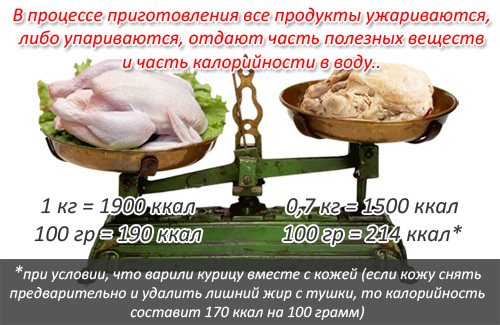
Similarly, you decided to cook buckwheat. We took 100 g of buckwheat, with a calorie content of 329 kcal, and 200 g of water. The cereal absorbed water, increased in volume, but remained with the same calorie content - 329 kcal. If you took not 200, but 300 g of water, the volume of the porridge would become even larger without changing the calorie content.
That is why, after you have counted the raw ingredients and prepared the dish, you need to weigh it and count it. Or simply calculate as a percentage how much you ate. Let's assume that you cooked 100 g of buckwheat, but only ate a third of it. To do this, you need to divide the calorie content of the finished dish by 3: 329/3 = 109.66 (rounded to 110) kcal. In this case, you don’t have to count the finished dish, since you only ate a third of it. There is no need to recalculate the calorie content of a finished dish that you are going to eat in its entirety. Just count its raw ingredients.
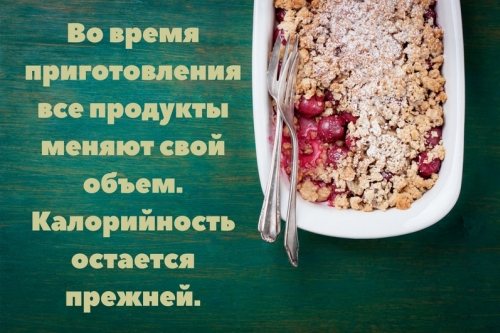
Calculation of calorie content of a complex dish
If it’s easy to cook porridge and cook meat, then what about complex dishes that are prepared for the whole family? Let's look at simple examples.
Calorie calculation of cutlets
Let's say you decide to make cutlets, beloved by your household, for this you will need:
- 1 egg – 86.35 kcal;
- 0.5 kg of beef – 935.0 kcal;
- 100 g of milk – 64.0 kcal;
- 100 g of white bread – 242 kcal;
- 20 g of garlic – 28.6 kcal;
- 50 g of onion – 20.5 kcal;
- 100 g of vegetable oil – 899 kcal.
Total calories: 2275.45 kcal.
Total raw weight of products: 925 g.
We calculated the calorie content of the amount of food we needed. To do this, we used the Calorie Table and Recipe Analyzer on our website. Now you can start preparing the cutlets themselves.
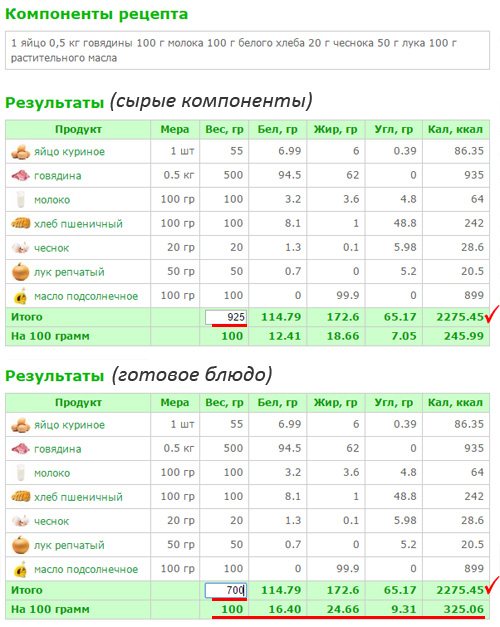
All cutlets will be 2272.45 calories. To find out how many calories are in 1 cutlet, you simply need to divide the total calories by the number of cooked cutlets. However, if the size of the cutlets is different, then this method of calculation is not the most suitable.
More precisely, calculate the calorie content and nutritional value per 100 grams of the finished product. To do this, do not eat cutlets until you have done all the calculations. So, after the cutlets are cooked, see if there is any oil left. If there is oil left, measure its volume using a measuring container (get used to using this container), and subtract the calorie content of the remaining oil from the total.
Let's say you have no butter left at all, the weight of the cutlets is 700 g. Now you need to calculate how many calories are contained in 100 grams of your cutlets. To do this, we divide the total calories by the weight of all the cutlets in their finished form.
Let's use the formula:
Calories of all raw ingredients / weight of the finished dish = calories per gram of the finished dish
Calorie content 1 gram x 100 = calorie content 100 g of finished dish
It turns out 2275.45 / 700 = 3.25. This is exactly how many calories are contained in one gram of ready-made food. And 100 grams of cutlets contain 325 kcal. The calculation is ready. Add your product to the calorizer database. Next time you cook, use the same amount of ingredients so you don’t have to count everything again. All that remains is to weigh 1 cutlet and write it down in your diary.
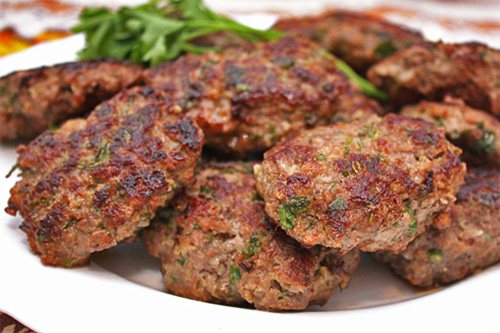
Calculation of calorie content of soup
You can also calculate the calorie content of a serving of soup. To do this, you need to weigh all the raw vegetables and then calculate the calorie content of each of them, which can also be found in our Calorie Table.
Then the total volume of the cooked soup is measured, since the water usually boils away during cooking, and then, some people like their soup thicker, while others prefer it thinner. The total calorie content of all products is divided by the resulting volume of the prepared soup, this figure is then multiplied by 100. This way we can calculate the calorie content of 100 ml of the resulting soup.
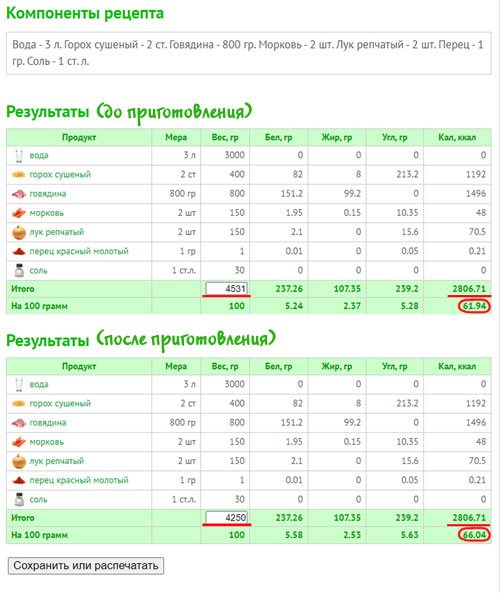
Formula:
Calories of all raw ingredients / volume of finished soup = calories of 1 ml of soup
Calorie content 1 ml x 100 = calorie content 100 ml of soup.
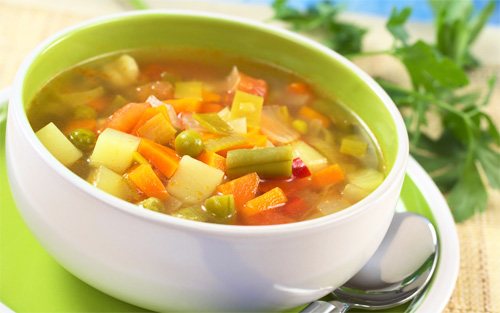
Calculation of calorie content of a side dish
The calorie content of a serving of pasta is calculated by bookmark, in other words, cooked pasta has the same nutritional value as raw pasta. It is the volume that changes, not the calorie content of the overall dish. But the calorie content of a dish per 100 grams varies.
To find out the caloric content of a serving of a simple dish, divide the number of calories by the portion eaten:
We prepared 100 grams of pasta and ate half.
Calorie content of pasta / 2 = calorie content of the eaten portion.
If you need to calculate the calorie content of mashed potatoes, take into account the calorie content and weight of potatoes, butter, milk, as well as the weight and volume of products. Let's say you have cooked 0.5 kg of potatoes (this is the weight of the finished potato), you added 100 ml of milk and 20 g of butter to it. Thus, the total weight is 620 g.
Now you can look at the calorie content of foods in the tables, and then make a calculation. To do this, you need to divide the total calorie content by the resulting weight, so you will know how many calories are in one gram of puree. We multiply the resulting figure by 100 and get the calorie content of a serving of mashed potatoes equal to 100 grams. It’s simple, the main thing is not to forget to write down the data in your Personal Account if you need to access it in the future.
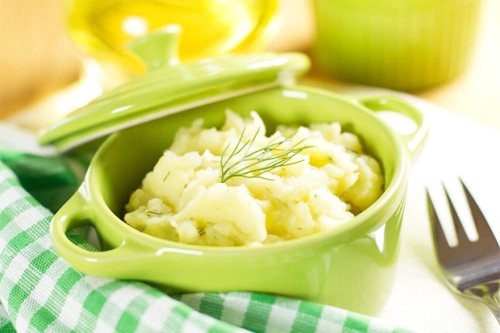
Two mistakes when calculating calories
It is very easy to make mistakes when calculating the calorie content of dishes. A typical mistake most people make is focusing on the weight of cooked dishes. The calorizer database in your Personal Account contains a huge number of recipes, but you never know exactly what ingredients a particular dish is made from. When choosing “porridge with milk”, you don’t know how much milk the author of the recipe added to it. When choosing a “vegetable salad with butter,” you won’t even guess what vegetables are in it and how much oil it contains. Likewise, when choosing simple “buckwheat on water”, you cannot know in what amount of water it was cooked. The calorie content of these dishes is good if you have a snack somewhere, but do not know how to write down the calorie content in your diary. In this case, you can safely use the calorie content of ready-made dishes.
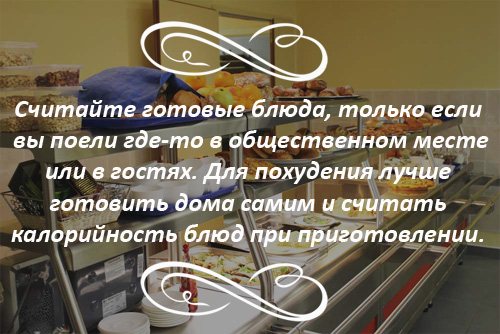
Always calculate the weight of dry (pasta, cereals, flour) and raw (vegetables, meat, fish) products, and use ready-made dishes only from the database of your own recipes, provided that each time you take the same amount of ingredients to prepare them.
The second mistake is to have a prepared snack. For an accurate calculation, you first weigh the raw ingredients, and then the finished dish. If you start snacking ahead of time, eat a cutlet or a bowl of soup “to try” or out of boredom, then you will not be able to accurately calculate its calorie content and risk overeating.
Show willpower, understand that if you have done all these calculations, then you need it. The food won’t run away from you, eat it later when it’s ready. But you will know exactly the calorie content of the dish and your portion.

So, today you learned from our article how to correctly calculate the calorie content of a finished dish. We gave cutlets, soup, pasta, and mashed potatoes as examples. We hope you can now easily calculate the calorie content of any dishes!
Author: Zhanna Sh. (especially for) Copying this article in whole or in part is prohibited.
Where to begin?
In practice, it makes sense to start with a coefficient of 1.3-1.4, gradually reducing calorie content by the same 10-15%. And under no circumstances do you condemn yourself to options where your daily calorie intake is equal to or even lower than your basal metabolic rate. This will sooner or later result in health problems. Better find out where your nearest gym is and increase your daily energy expenditure.
By the way, total calories are, of course, not everything. Although you can effectively lose weight by adhering only to this rule. I like to give the example of American blogger Anthony Howard-Crowe, who successfully lost weight online by eating whiskey and ice cream. However, if you are concerned not only with the numbers on the scales, but also with your general well-being, then later you will have to delve into how much protein, fat and carbohydrates you need to eat. And how can these ratios be manipulated? But first, just start counting calories. And lose weight.
